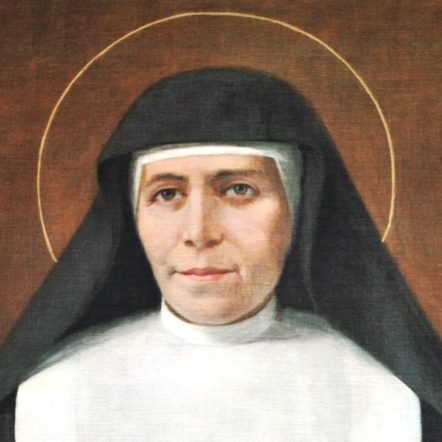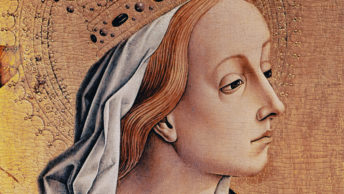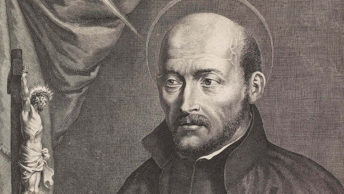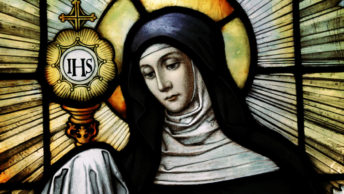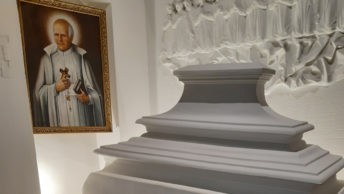On May 13th, we celebrate the feast day of a Sister/saint/writer who at age thirty-five sat down among her juniors and asked them to teach her to read and write. Remarkably, a scant ten years later when in mid-life this nun passed away she left behind herself a sheaf of letters that, to this very day, the Sisters of the order she co-founded, the Salesian Sisters [officially, the Daughters of Mary Help of Christians], turn to whenever they want to remind themselves of who they are and what they are all about. For the most part, in this brief essay I’d like to recall those letters and the remarkable woman who wrote them, Mother Mary Mazzarello (1837-1881), co-foundress of, as I say, the Salesian Sisters.
However, before doing so, let’s stay for a moment on the topic of literacy in the good Sister’s lifetime, and, on the topic too of what God was doing about it. For there are thoughts worth pondering in those subjects too.
To sum up a complicated history, literacy in the 19th Century was in a jar half full/jar half empty condition. Yes, for the whole of the century literacy rates in general continued their steady ascent, and, yes, too, just about every forward-looking person who couldn’t handle print wished that he or she could. We remember in this regard what the illiterate servant Mr. Boffin of Dickens’s mid-century novel Our Mutual Friend (1864-1865) did when he suddenly became wealthy: he hired someone to teach him to read and write.
And, yet still, not everyone was learning their abc’s. Most notably, the children of the poor were getting left behind in this vital area of life preparation. They were the kids hoovered up by the Industrial Revolution’s labor vacuum and put to work at unseemly ages in the era’s mines, factories, and child-for-hire enterprises. We recall, for example, in another Dickens classic, Poor Jo of Bleak House (1852-1853). He was the London street-sweeping kid who said of himself that he “don’t know nothink about nothink at all,” not even to spell his name nor to say a prayer.
And then, too, there were the children who were getting left behind because they lived in rural areas and/or because they were girls. Mary Mazzarello, who came of age in pre-unification Italy’s rural Piedmont region, fell into both those classes of child. As I search among my books for situations analogous to hers, I come up with that of the child protagonist in Sarah Orne Jewett’s “A White Heron” (1886). Yes, howsoever satisfied by her daily cow-keeping and bird-spotting rounds, Sylvia in that classic American story is not pictured reading a book nor much preparing herself for the print-geared world that would be her adult testing place. And so it was too for the farmer’s daughter Mary Mazzarello, whose contentment may have been infinitely greater than Sylvia’s by virtue of the joy that she got from, as she would write in a letter years later, “work[ing] in the field that the Lord had given [her],” but whose ability to help others later in her life would for a time be limited by her inability to read and write.
As for God and what He thought about this literacy/illiteracy divide between the children of the financially equipped and those of the poor, He, of course, wanted literacy for the poor kids no less than He wanted it for the means-capable. Who can think otherwise given the great number of “teaching orders” that he called into existence in the 19th-century! Yes, look it up. The Sisters of Notre Dame de Namur, the Marianists, the Marist Brothers, the Congregation of Holy Cross, the Xaverian Brothers, the School Sisters of Notre Dame, the Oblate Sisters of Providence, and a host of other religious institutes focused on the education of the poor were all founded in the 1800s. And now look up whom God asked to co-found the female religious order that is today the largest of all those that work either inside or outside of the classroom, the Daughters of Mary Help of Christians? That would be Mother Mary Mazzarello, a woman who could neither read nor write at the time of her calling.
Heck of a remarkable thing, that, as well as too the Sister’s part in it! And the letters—what’s in the surviving, collected 63 of the many hundreds that Mother Mazzarello no doubt wrote in her role as Superior of the Order. For sure, thoughts and attitudes that the Daughters of Mary Help of Christians would do well to keep in mind: that “wisdom is a taste for the things of God,” for example; and that the Eucharist is the “greatest expression” of “God’s love,” says Sr. Antonia Colombo, the Sister Superior who introduces the collection.
However, there are thoughts in the letters for you and me too. For example, thank those who deserve your gratitude. That’s the life-policy that I get from the first of the letters, a New Years note sent by Mother Mazzarello to the doctor who had been attending in 1874 to the fledgling convent’s medical needs. Or, again, disarm your boss with ego-boosters even as you remind him of his deficiencies. That’s what the Mother Superior does in 1875 when she writes this to the priest who was then the Order’s Director General: “It feels like a century since we last saw you, or received letters from you.” Once more, keep Jesus at the center of everything. Oh, in how many ways does Mother Mazzarello pass on that basic advice to the Sisters to whom she writes. And, lastly, keep one’s success in perspective.
But, no, I correct myself. I get that thought not so much from the letters as I get them from this anecdote about Mother Mazzarello near the end of her extraordinarily successful life. Her good friend Sister Petronilla, a woman who had been with her from the very beginning of their work, was worrying to the Mother Superior that the new Sisters who were joining the order in sizable numbers might be too well educated to remain humble, when suddenly the now very literate Mother Superior cut her off: “Hush, Petronilla! If they find out how little we know, they might throw us out.”
Yes, there is a lot for all of us in the life and letters of Mother Mary Mazzarello.

